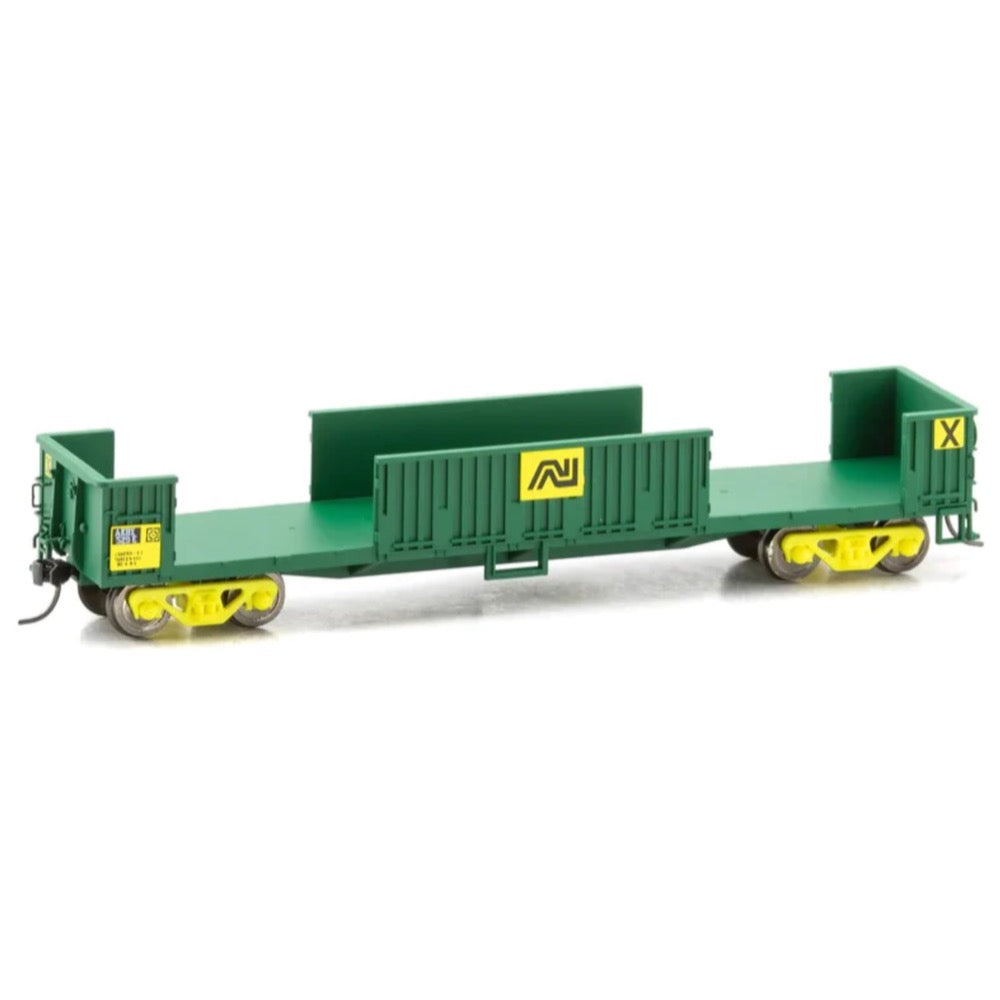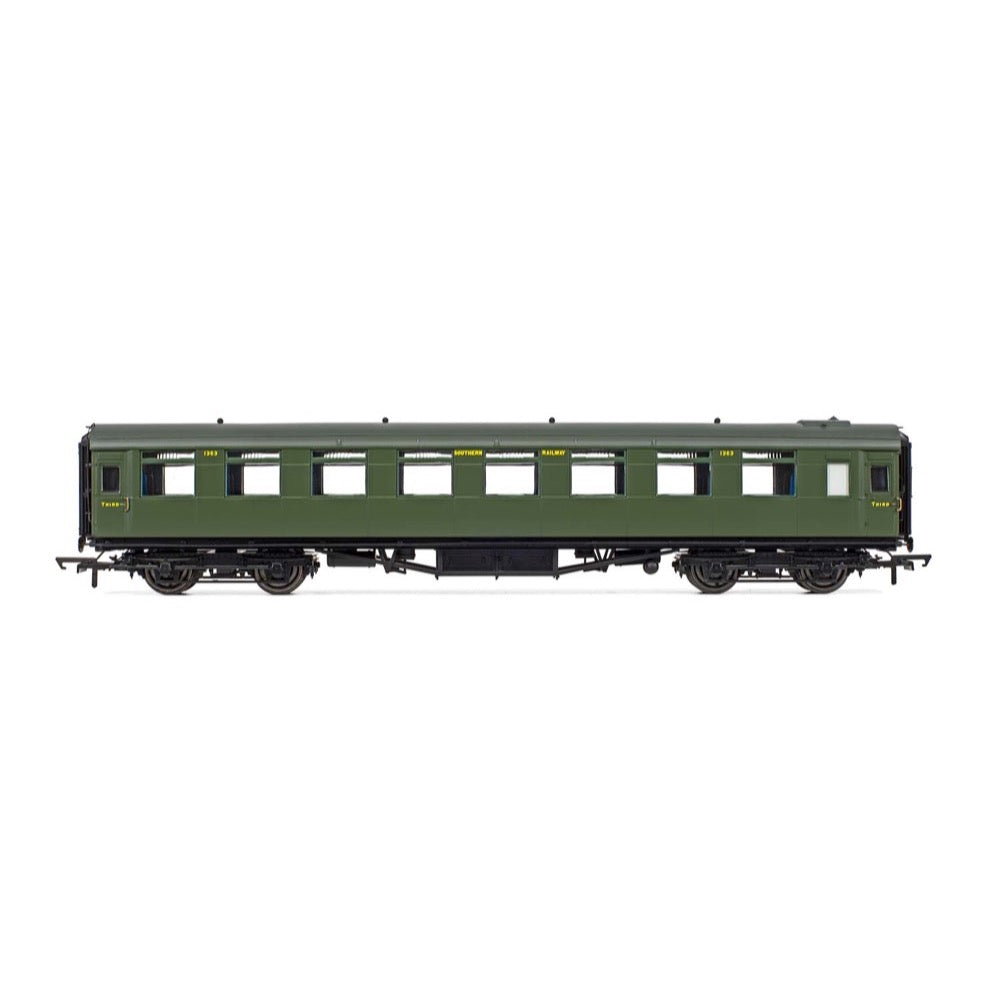
Hornby R40030 OO SR Maunsell Third Class Dining Saloon 7864
48.00
$
<p>Maunsell's diagram 2652 third class dining saloons were built in 1927 to provide an area for third class passengers to make use of the kitchen services provided in first class kitchen/dining coaches. The exterior of the coaches utilised the 'low-window' Maunsell styling, with ventilators above the windows and doors at each end which were gently recessed to accommodate their grab handles within gauging limits.</p>
<p>Inside, each coach could accommodate 64 diners and two toilets were located at the end of the coach furthest away from the kitchen/dining first coach. Whereas a further 40 kitchen/dining firsts were built to the same 'low-window' style from 1929 onwards, accompanying third class dining was felt to be better served by the new 'high-window' open third saloons and as a consequence, from 1930, the six third class restaurant dining saloons were reclassified as open thirds.</p>
<h3>Specification</h3>
<ul>
<li>Item Length - Without Packaging (cm): 24.3</li>
<li>Item Height - Without Packaging (cm): 5</li>
<li>Item Width - Without Packaging (cm): 3.5</li>
<li>Item Weight - Without Packaging: 0.13</li>
<li>Item Scale: 1:76 Scale 00 Gauge</li>
<li>License: No</li>
<li>Finish: Painted</li>
<li>Colour: Green</li>
<li>Gauge: OO</li>
<li>Operator: BR</li>
<li>Designer: Maunsell</li>
<li>Livery: SR Olive</li>
<li>Minimum Curve (mm): Radius 2</li>
<li>Number of Parts: 1</li>
<li>Motor: 5 pole skew wound</li>
</ul>
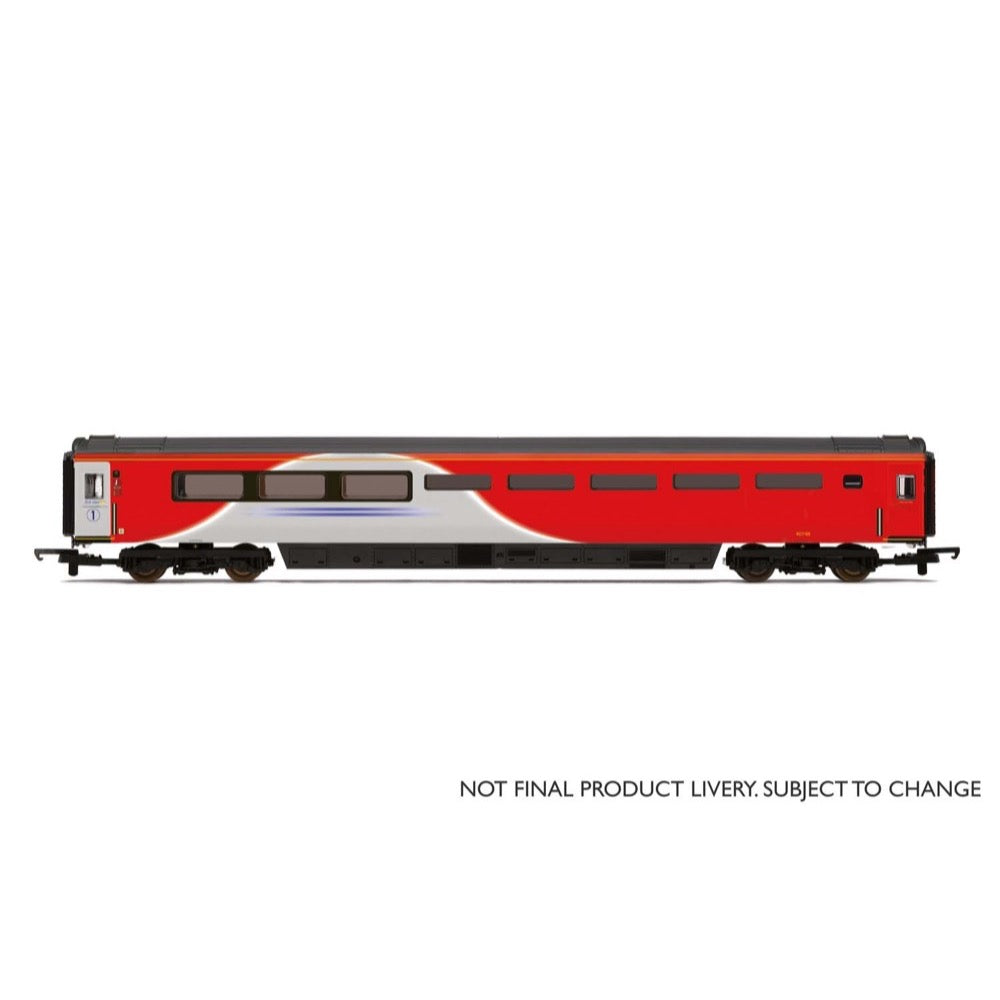
Hornby R4932 LNER Mk3 Trailer Buffet TRFB 40748 - Era 11
40.00
$
<p>British Railways Mark 3 Trailer Restaurant First Buffet 40748</p>
<h3>Specifications</h3>
<ul>
<li>Operator: London North Eastern Railway</li>
<li>Livery: Red & Silver</li>
<li>Running Number: 40748</li>
<li>Era: 11</li>
<li>Length: 305 mm</li>
</ul>
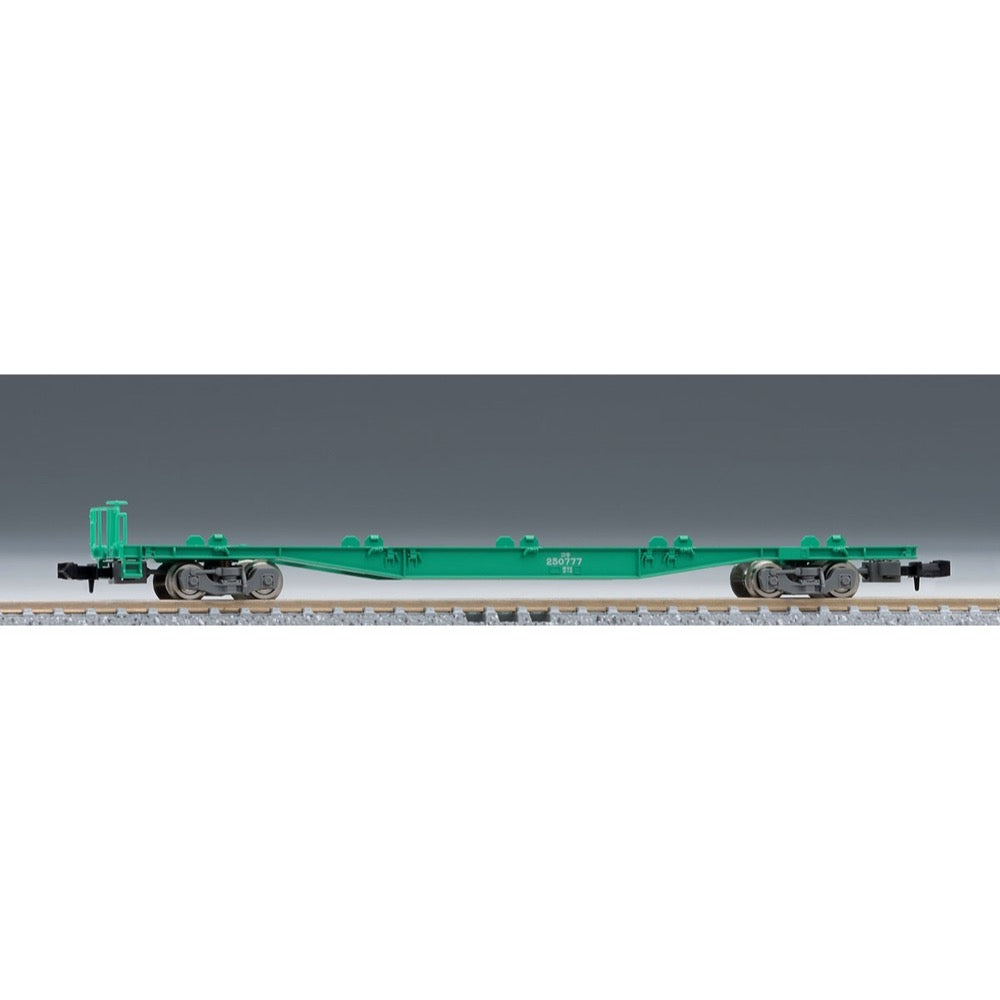
Tomix 8742 N KOKI 250000 without container with tail light
18.00
$
<p>The Koki 50000 series is a container freight car manufactured from 1971.</p>
<p>The Koki 250000 series was introduced in 1985 after the Koki 50000 series was modified to handle 100km/h and 1,200t trains. When it was first remodeled, it was painted in the same Red No. 3 color as before, but later the body was painted green for easy identification.</p>
<p>When it was first introduced, it was used for high-speed freight trains on the Tokaido Main Line, but after the appearance of the Koki 100 and Koki 101 series, it was transferred to high-speed freight trains on the Tohoku Main Line along with the Koki 350000 series.</p>
<p>From around 1993, the bogies were replaced with reinforced types.</p>
<p>In its later years, it was used together with the Koki 50000 series, but was retired in 2012 due to the increase in the number of Koki 107 series.</p>
<h3>Features</h3>
<ul>
<li>The handrails on the deck are reproduced with additional features.</li>
<li>The bogies are reproduced with reinforced versions</li>
<li>Taillights light up (only on the handrail side)</li>
<li>The handrails are already installed.</li>
<li>Transfer sheet for changing the car number is included</li>
<li>Car number is already printed</li>
<li>Equipped with a constant light board</li>
<li>Silver wheels are used</li>
</ul>
<h3>Includes</h3>
<p><strong>Vehicles</strong></p>
<ul>
<li>Koki 250777</li>
</ul>
<p><strong>Accessories</strong></p>
<ul>
<li>
<p>Transfer sheet: Vehicle number</p>
</li>
</ul>
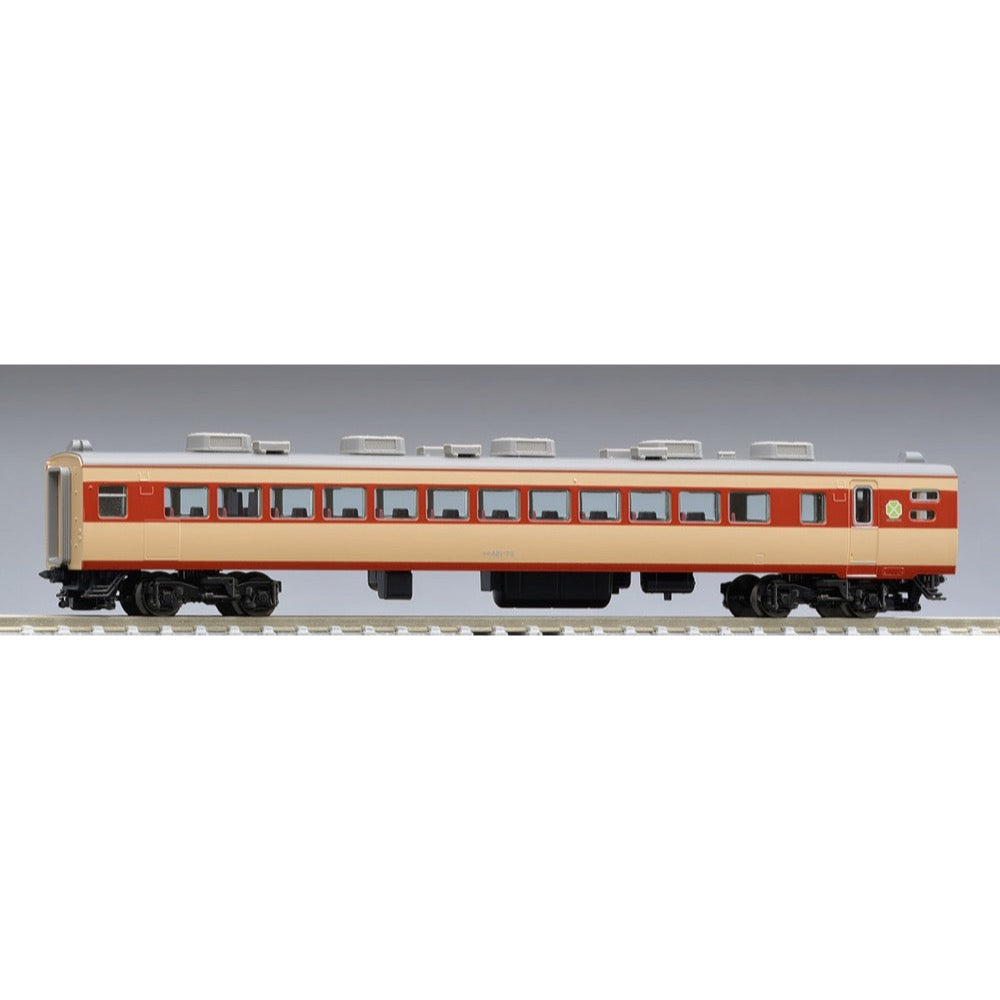
Tomix 9020 N 9020 SARO 481 (489) With AU13
24.00
$
<p>The 485 series was introduced in 1968 as a limited express train compatible with three power sources, DC and AC 50/60Hz, based on the previously introduced 481 and 483 series, and was manufactured for a long period until 1979, serving on electrified sections nationwide as JNR's representative limited express train.</p>
<p>The 489 series was based on the 485 series and was equipped with measures to allow it to pass through the Shinetsu Main Line between Yokokawa and Karuizawa, and was introduced in 1971. The Saro 481 and 489 types are green cars based on the 485 and 489 series, and one or two of these cars were always included in limited express trains in the past. Cars manufactured from 1972 were changed from the AU12 cooler, also known as the mushroom type, to a distributed AU13 cooler.</p>
<h3>Features</h3>
<ul>
<li>High grade (HG) specifications</li>
<li>Reproduces the Salo 481 and 489 models equipped with AU13 coolers</li>
<li>Emergency exit and gray roof</li>
<li>Shoe prints and door rails are printed</li>
<li>Toilet tank already installed, replacement toilet flush pipe included</li>
<li>Car number is selectable and transfer sheet compatible (included in the set)</li>
<li>New current collection system and black wheels</li>
<li>TN coupler with piping (SP) is standard equipment</li>
</ul>
<h3>Contents</h3>
<p><strong>Vehicles</strong></p>
<ul>
<li>Salo 481 (489) (with AU13)</li>
</ul>
<p><strong>Accessories</strong></p>
<ul>
<li>Runner parts: Antenna</li>
<li>Parts: Toilet sink pipe</li>
</ul>

Powerline PD-602B-158 VOCX-158 VR Open Wagon
31.00
$
<p>Authentic original Powerline Rolling Stock model train item. Premade and painted scale Australian rolling stock for HO and OO guage railroad sets. High quality paint scheme and construction, packaged in a sturdy box.</p>
<ul>
<li>PLM-PD602B158</li>
<li>Powerline</li>
<li>HO Scale</li>
<li>VOCX Open Wagon</li>
<li>#VOCX 158 VR</li>
<li>Fitted with Kadee Couplers</li>
</ul>
<p> </p>
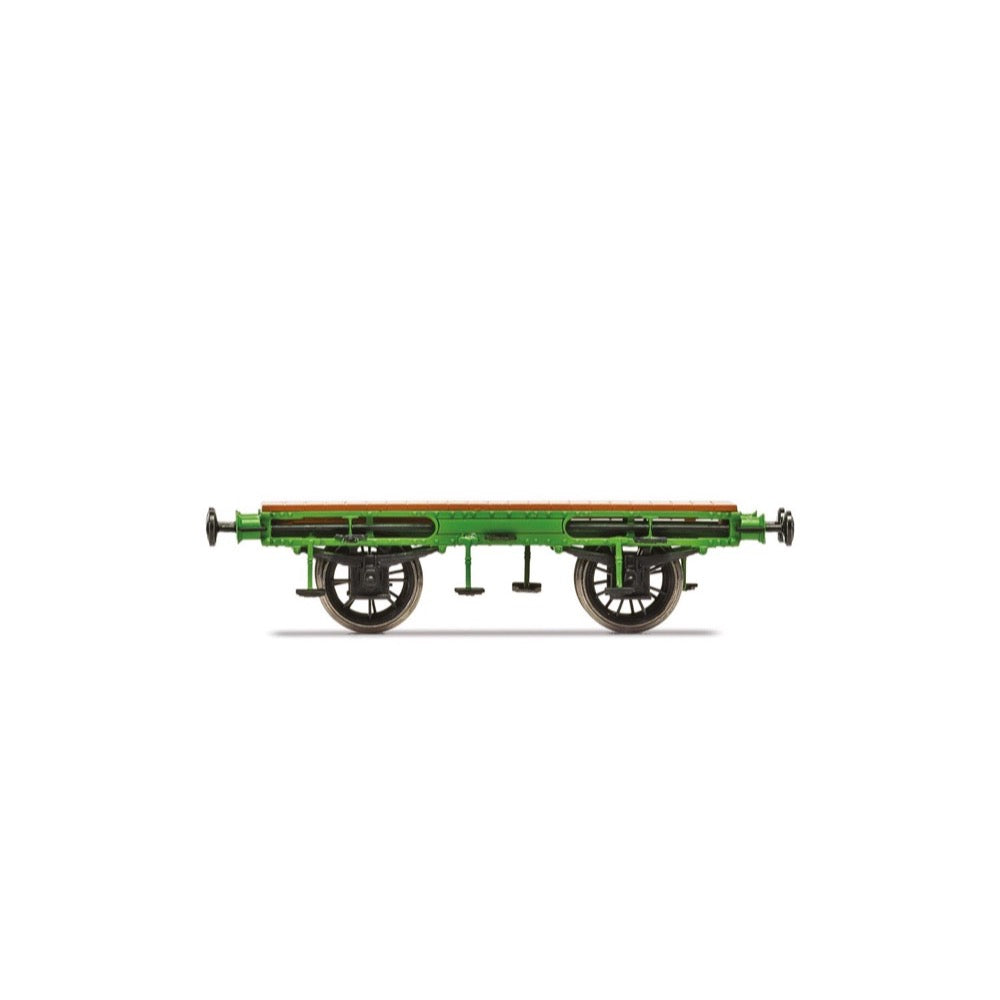
Hornby R60276 L&MR Flatbed Wagon 1804 - 1869
11.00
$
<p>General goods vehicles, or 'Merchandise Wagons' of the later Stephenson period were simple four-wheeled platform vehicles with sprung 3' diameter wheels and were typically around 14' long. They had a superficial platform area of seventy-five square feet' able to carry 'a considerable quantity of light goods' of about four tons weight.'</p><p>By 1841, dumb-buffers and coupling chains were fitted. As the decade progressed, the length of the wagons shortened and the width increased, creating a greater load area. The fitment of loose sides around 2' high allowed for the carriage of coal and ensured loads were protected by canvas tarpaulins painted with the company's initials to prevent their theft. Each wagon had its number, weight and gauge clearly marked in white paint on a black background.</p><p>As travel time by railway was superior to that of road travel by coach, coach companies sought new ways to compete, leading to mail coaches and stagecoaches being loaded onto the 'open carriage wagons' for onward travel to places such as Liverpool or Manchester. These connecting, or 'branch coaches' were to become the antecedent for the Branch Line railways of the future.</p><p>This flatbed wagon comes in a vibrant L&MR green livery. The accessory bag contains two chain couplings.</p><h3>Specifications</h3><ul>
<li>Item Length - Without Packaging (cm): 7.5</li>
<li>Item Height - Without Packaging (cm): 2</li>
<li>Item Width - Without Packaging (cm): 3.5</li>
<li>Item Weight - Without Packaging: 0.02</li>
<li>Item Scale: 1:76 Scale 00 Gauge</li>
<li>Finish: Painted</li>
<li>Colour: Green</li>
<li>Gauge: OO</li>
<li>Operator: L&MR</li>
<li>Designer: L&MR</li>
<li>Livery: L&MR</li>
<li>Minimum Curve (mm): Radius 1</li>
<li>Number of Parts: 1</li>
<li>Buffer Type: Separate Plastic Buffers</li>
<li>Coupling Type: Chains</li>
</ul>
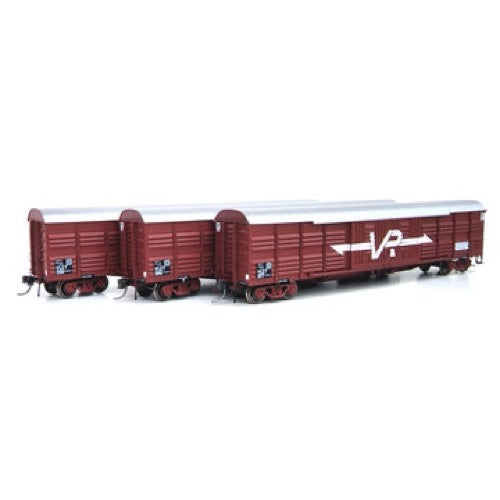
On Track Models HO VR VLEY VR Large Logo Pack 2 3 pack
94.00
$
<p>There were 250 VSX Louvre Vans built for the Victorian Railways between 1972 & 1976. The initial batch of 100 were built by the Ballarat North Workshops, with the Newport Workshops building a further 50 wagons. The final batch of 100 Vans were built once again by the Ballarat North Workshops.</p>
<p>Gauge convertible, they have been used extensively across mainland Australia on both standard gauge and on their own native broad gauge. They have visited all of the major state capital cities and rail centres throughout Australia.</p>
<p>From carrying general goods, pet food, newsprint, and in later years bagged rice, these 56’ Louvre Vans have proved to be a versatile wagon and the backbone of the Victorian Railways.</p>
<p>These models feature opening sliding doors, checker plate pattern on the internal floor surface, cargo barriers, a choice of plain pattern or louvre doors, and versions with and without the end louvre on the roof panel. They also come with Genuine KD Metal Couplers, and metal pin point axles.</p>
<p>There are 6 body styles produced across 11 different packs. Each pack contains 3 ‘HO’ Scale models.</p>
<h3>Specification</h3>
<ul>
<li>Three HO Scale VSX Models</li>
<li>Style: 3 VLEY Vans with Large VR logos</li>
<li>Wagon numbers: VLEY 977, VLEY 986, & VLEY 990</li>
<li>Era covered: 1980's</li>
<li>All 3 Vans feature 'Freight Centre Traffic Only' logo</li>
</ul>
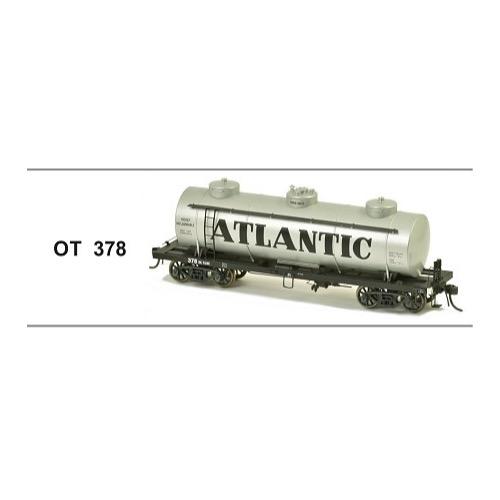
SDS Models HO VR OT 10000 Gallon Tank Car OT 378 Atlantic
29.00
$
<h3>10000 Gallon Rail Tank Car Series</h3><p>SDS Models is producing a range of 10 000 gallon rail tank cars based upon a standard VR design 38 foot welded underframe. These HO Gauge models are presented with four unique, oil company specific, tank designs and accurately portrait the prototypical differences between each companies versions to meet their intended requirements. The models cover all major brands used in Victoria with the exception of the Shell Oil Company whose fleet rode on 36 foot riveted underframes.</p><h3>The models are available in triple-packs and are categorised into three groups:</h3><ul>
<li>OT - as delivered in the early 1950s to the early 1960s</li>TW / TWF - 1960s to the late 1970s<li>VTQA / VTQF / VTQY - 1980s and 1990s.</li>
</ul><h3>Model Features:</h3><ul>
<li>Highly detailed Ready-to-Run HO scale model</li>
<li>Injection moulded high quality plastic body</li>
<li>Etched metal walkways</li>
<li>Full brake rigging and underfloor detail</li>
<li>Semi scale metal rimmed wheels</li>
<li>OT bogie, 5’11” wheelbase with 36" diameter wheels.</li>
<li>Genuine Kadee #158 whisker coupler</li>
<li>18” Minimum radius recommended</li>
</ul>
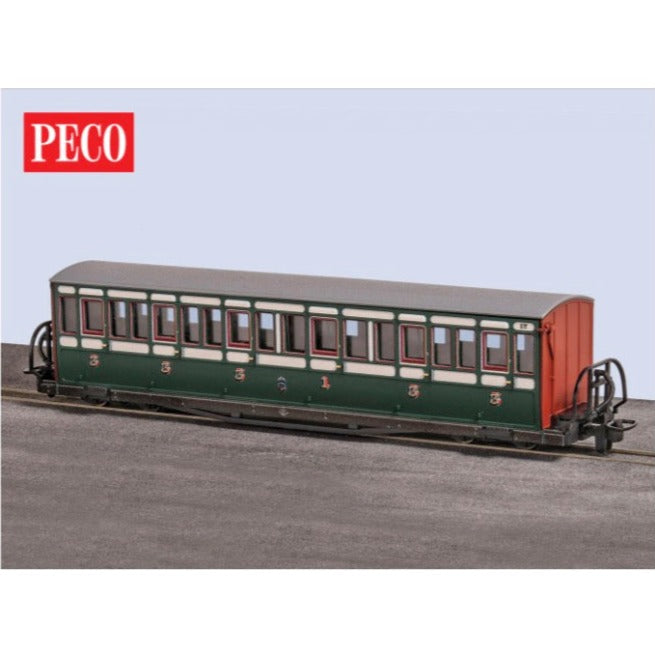
Peco GR601A GLT OO-9 FR Short Bowsider Bogie Coach Early Preservation Green 17
43.00
$
<h3>FR Short 'Bowsider' Bogie Coach - Early Preservation - Green 17</h3>
<p>The four coaches in this group of vehicles were known as the 'Bowsiders' because of the shape of their sides, and were supplied by two builders in 1876 and 1879. Numbers 17 and 18 are the shorter coaches, delivered in 1876, and the two long coaches, numbers 19 and 20, arrived three years later in 1879. All four are in service on the Ffestiniog Railway today.</p>
<p>Our new models capture the subtle style of these coaches, with the 'bow' towards the bottom of the sides. The models feature very fine print detail too, including the Ffestiniog Railway company emblem. The livery is green with a cream trim around the upper half of the coach, and contrasting maroon end panels.</p>
<p>No. 17 wears this livery today. Fitted with metal-tyred wheels the coaches are lovely smooth runners.</p>
<p>PECO 009 Irregular and Mainline Code 80 Setrack and Streamline track systems</p>
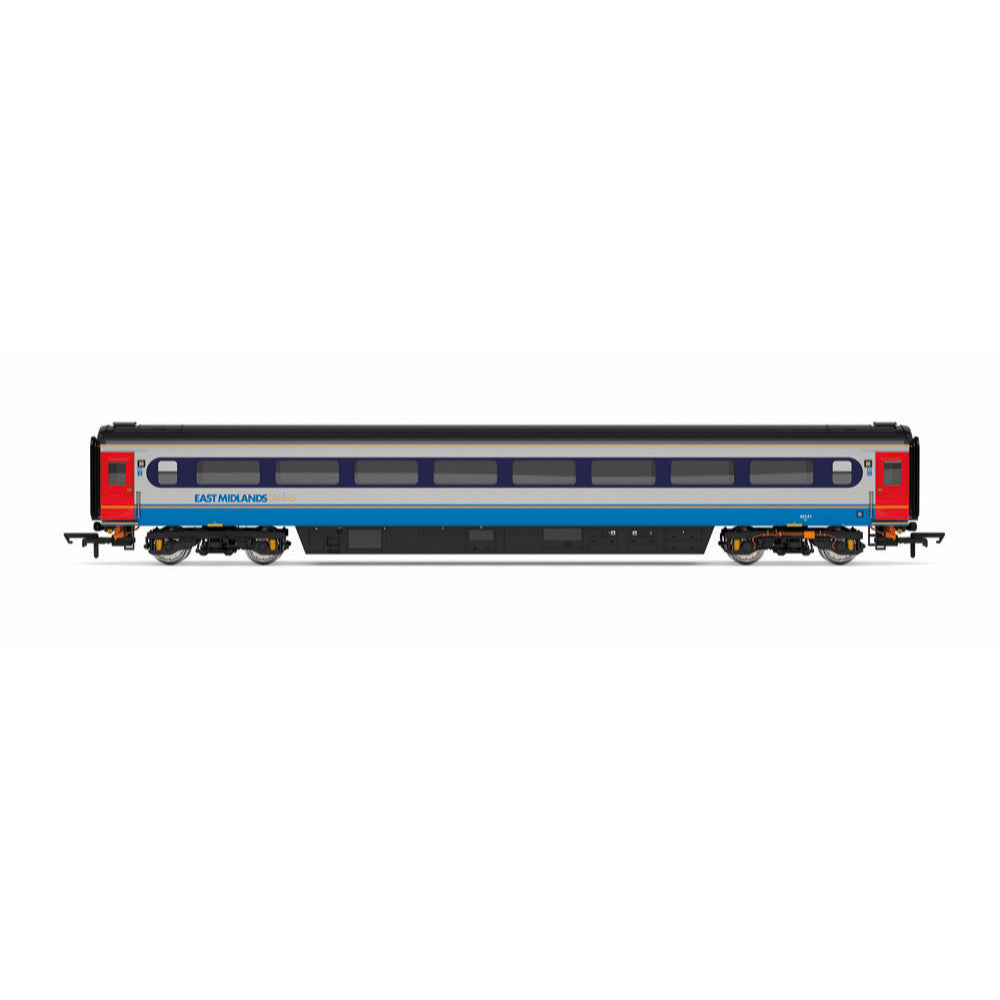
Hornby R40362 OO East Midlands Mk3 Coach B 42141 Trailer Standard TS
32.00
$
<p>In-order to allow running at 125 mph on Britain's railways, new rolling stock was needed by British Railways, and a new Mark entered service in 1975. Significant improvements over the Mk2 included new secondary air suspension between the bogies and the coach body as well as aerodynamic skirting on the underframe. Mk3 Coaches are 75ft (23m) long enabling far greater capacity than older coaches. Mk3 coaches also incorporate disk breaks and wheel slip protection enabling faster deceleration.</p><p>The first Mk3 Coaches to be delivered were used as part of the HST prototype along with the two Class 41 diesel power cars in 1972. Mk3 coaches entered service in 1975 along with the Class 43 forming the iconic InterCity 125 trainset.</p><p>After the HST Mk3 Coach variant was introduced, further Mk3 Coaches were introduced to the West Coast Mainline for use as part of locomotive hauled trains. Mk3s remain in service as part of HSTs with East Midlands Railway among other companies</p><p>The British Rail Mk3 Coach was developed primarily for the Class 43 HST, but incorporated design features to enable it to be hauled by conventional locomotives. The first coach entered service in 1975 and the last were made in 1988. Most Mk3 Coaches built are still in service today, including a part of the Royal Train.</p><h3>Specifications</h3><ul>
<li>Item Length - Without Packaging (cm): 30.3</li>
<li>Item Height - Without Packaging (cm): 5</li>
<li>Item Width - Without Packaging (cm): 3.5</li>
<li>Item Weight - Without Packaging: 0.19</li>
<li>Item Scale: 1:76 Scale 00 Gauge</li>
<li>Finish: Painted</li>
<li>Colour: Blue</li>
<li>Operator: East Midlands Railway</li>
<li>Designer: Sir Kenneth Grange</li>
<li>Livery: East Midlands Red/Blue</li>
<li>Minimum Curve (mm): Radius 2</li>
<li>Number of Parts: 1</li>
</ul>
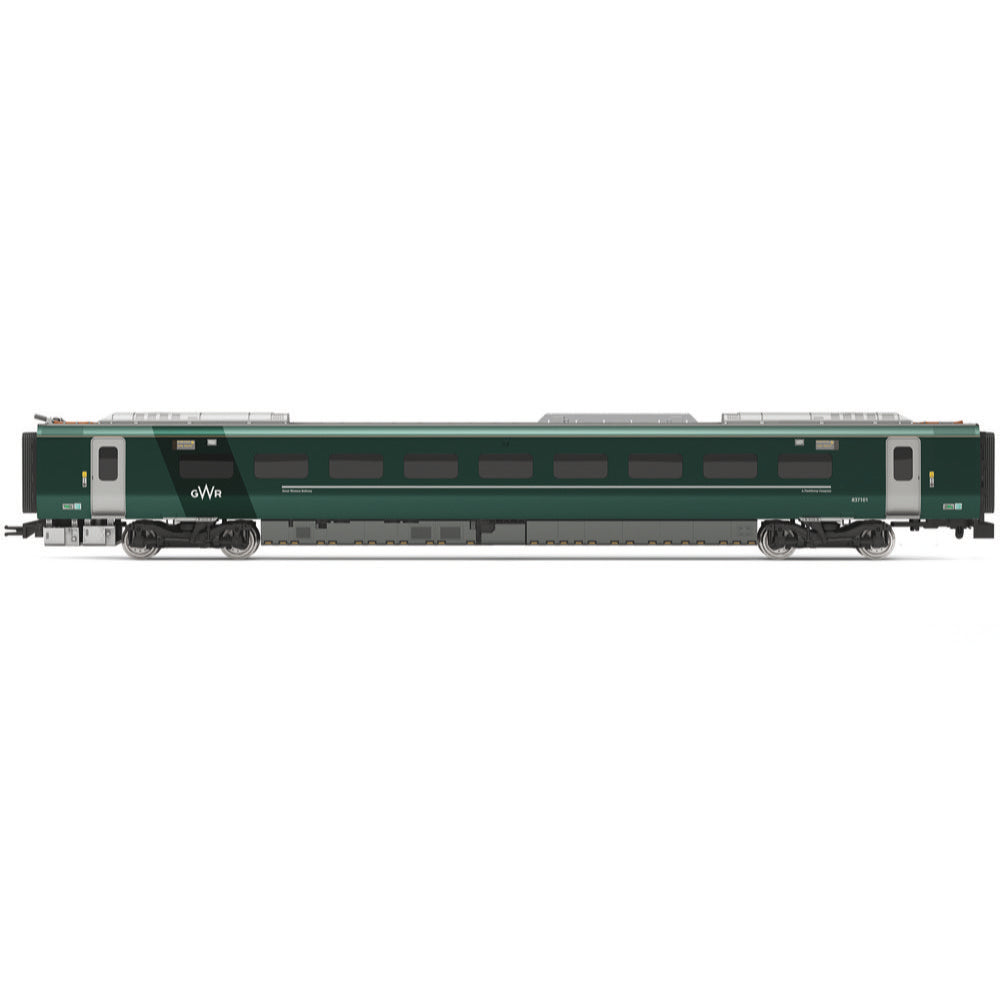
Hornby R40351 OO GWR Class 802/1 Coach Pack
162.00
$
<p>Shortly following the popular British Rail Class 801 'Azuma' EMU were the nine-car 802/1 sets, with two units (801205 and 801207) entering service on 18 November 2019 onto the London King's Cross - Edinburgh route. As of November 2020, all Class 801 units have now entered service with LNER. This Coach Pack contains four 802/1 units bearing GWR livery: 837105, 836105, 834105 and 833105.</p><h3>Specifications</h3><ul>
<li>Item Length - Without Packaging (cm): 85.3</li>
<li>Item Height - Without Packaging (cm): 5</li>
<li>Item Width - Without Packaging (cm): 3.5</li>
<li>Item Scale: 1:76 Scale 00 Gauge</li>
<li>Finish: Painted</li>
<li>Colour: Green</li>
<li>Operator: GWR</li>
<li>Designer: Hitachi Rail</li>
<li>Livery: GWR</li>
<li>Minimum Curve (mm): Radius 2</li>
<li>Number of Parts: 4</li>
</ul>


